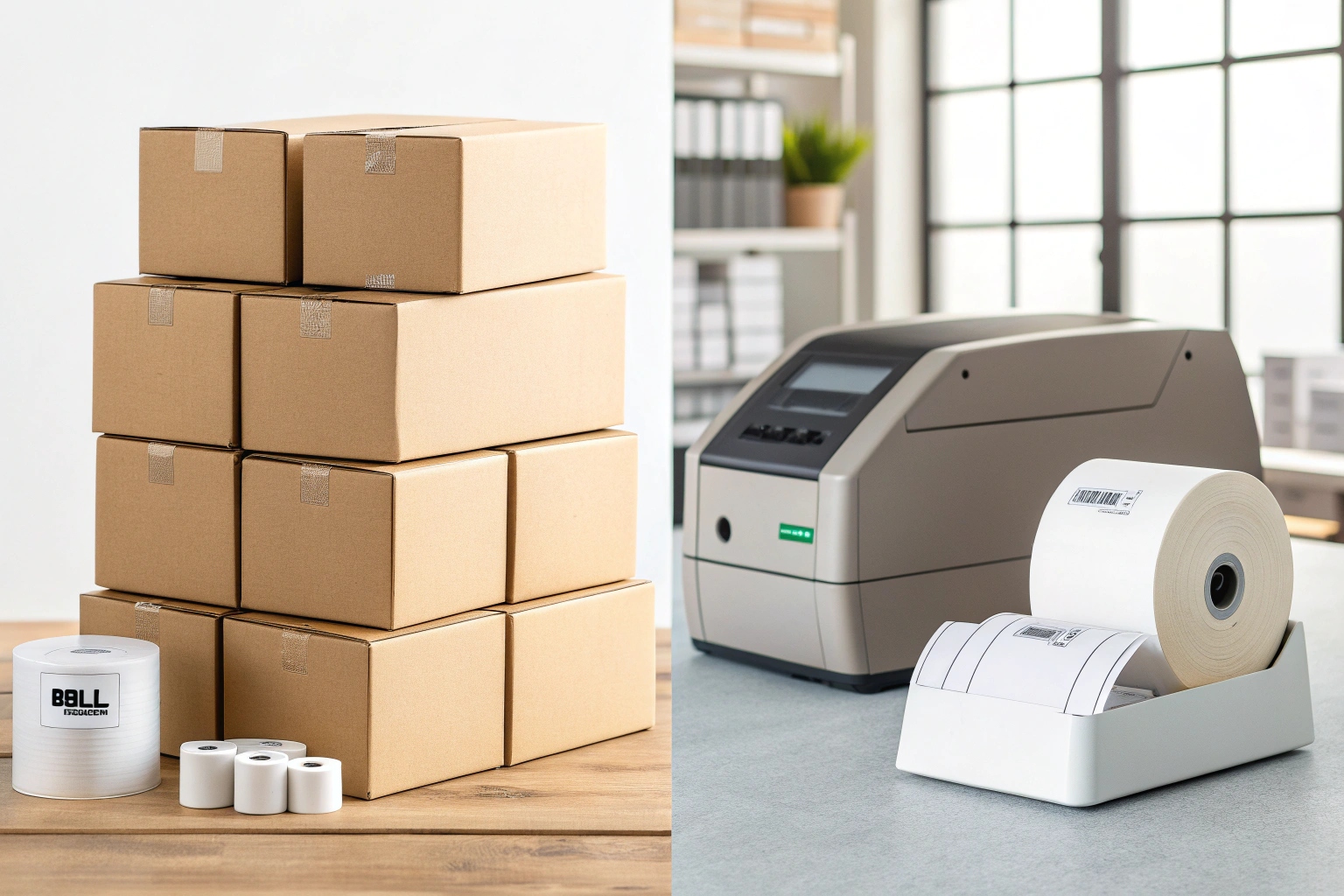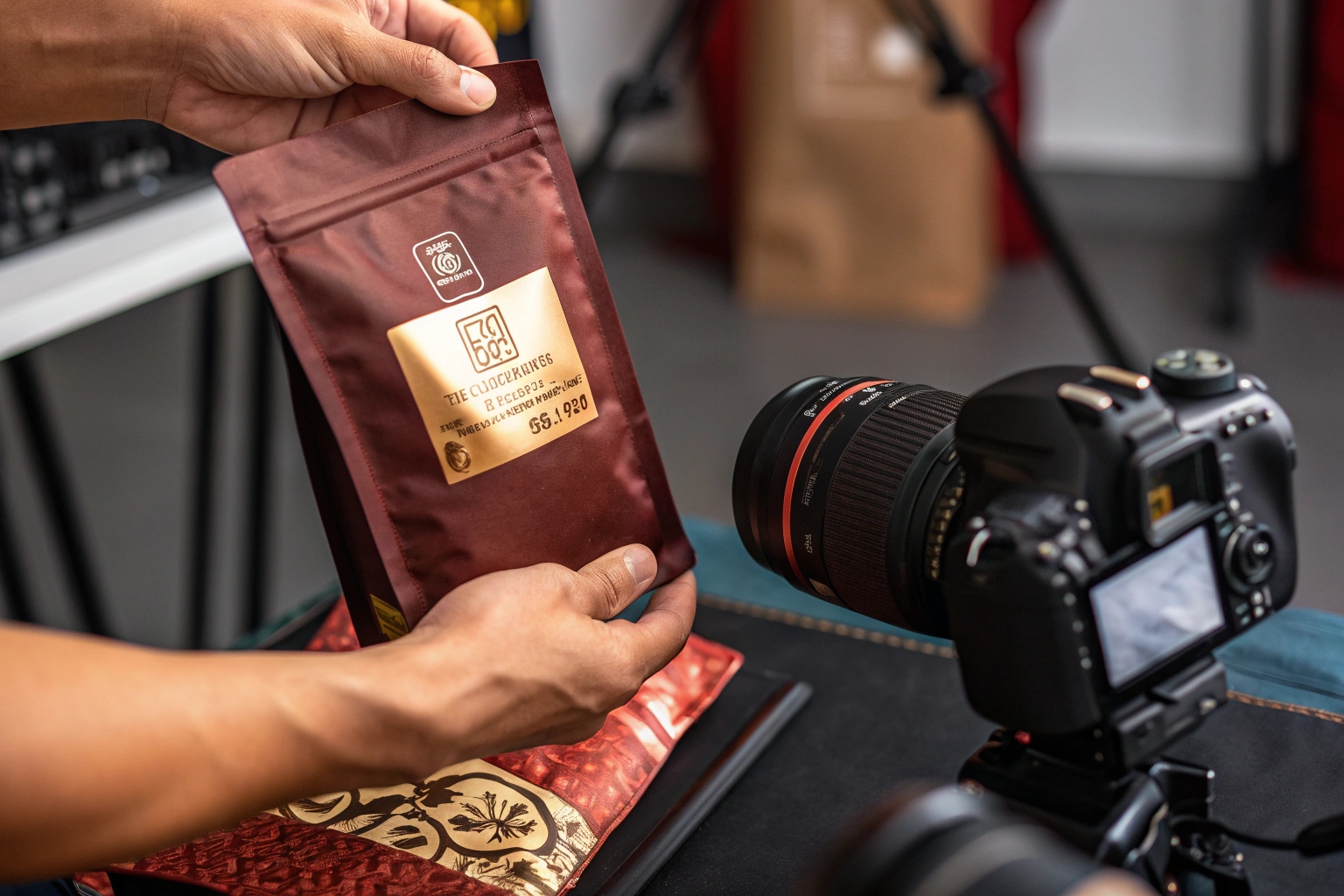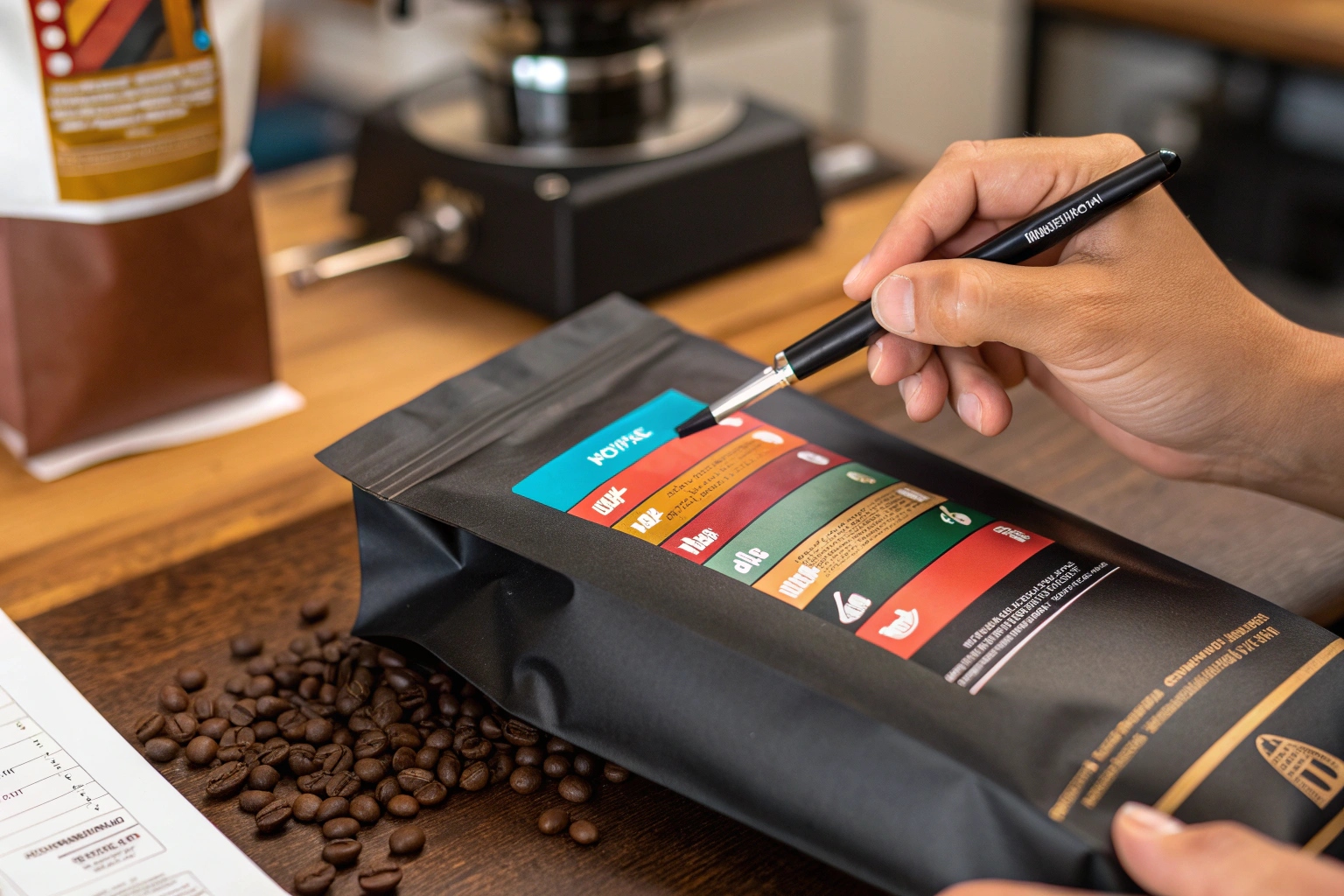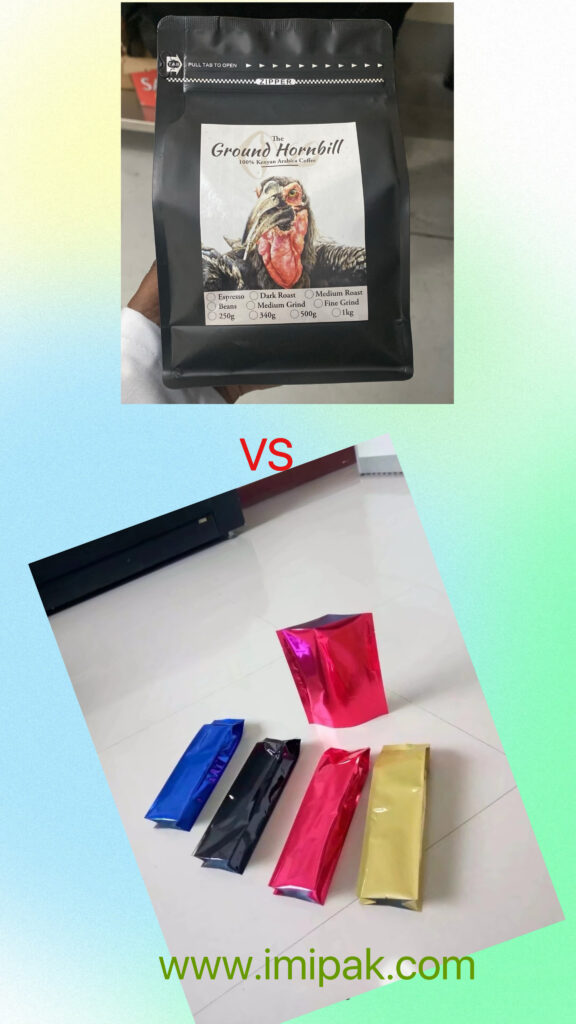When I work with small coffee brands, they always ask me one thing first: should we start with labels1, or go straight into custom printed bags2?
Labels are cost-effective3, flexible for small batches, and fast to apply, while custom printing offers a more premium, professional look with higher minimums and longer lead times.
I’ve helped clients do both—start with labels1 to test the market, then switch to custom printed bags2 after their brand grows. Here’s everything you need to decide what’s best for your product right now.
Is it cheaper to print your own labels1 or buy them?
Some brands want full control. Others prefer outsourcing. Both options work—but cost and convenience vary depending on your volume.
Buying labels1 in bulk is usually cheaper at small volumes, but printing your own becomes cost-effective3 if you have many SKUs or frequent updates.

Dive Deeper
Cost comparison
| Method | Best For | Setup Cost | Per Label Cost |
|---|---|---|---|
| Buying preprinted | Simple, stable SKUs | Medium | Low |
| Printing in-house | Variable SKUs | High (printer + supplies) | Medium-low over time |
What adds cost?
- Preprinted labels1: setup fees, design revisions, shipping, minimum order quantities
- In-house printing: printer cost, ink/ribbon, label rolls, calibration time
Break-even point
If you're producing more than 5,000–10,000 labels1 per year and changing designs often, printing in-house usually wins in the long term. But if you're just starting, stick with preprinted.
What is a label in packaging?
We all know what a label is—but in packaging, it serves multiple functions beyond branding.
A packaging label4 is an adhesive element that carries key product information, branding visuals, and compliance details, applied onto the surface of a bag or container.

Dive Deeper
Key roles of a label
- Communicates brand identity
- Shows product specs: origin, weight, roast date
- Meets legal requirements
- Adds shelf presence
Common label materials5
| Material | Features |
|---|---|
| Paper | Low-cost, easy to print |
| BOPP/PP Film | Water/oil resistant |
| Kraft | Natural look |
| Metallic | Premium effect |
Placement tips
- They won’t interfere with zippers, seals, or valves
- They face forward in retail
- They balance design and information space
I often suggest a front brand label + a smaller info label on the back for small batches.
How to design a label for your product?
Great labels1 start with clarity. Design choices must fit your bag size, brand tone, and consumer habits.
Design a label by choosing readable fonts, brand colors, legal text, and selecting a finish that fits your positioning—matte, gloss, kraft, or metallic.

Dive Deeper
Design steps
- Define what must be on it: brand, weight, roast, expiration
- Choose shape and size: square, circle, custom die-cut
- Use contrast: dark on light or light on dark
- Include barcode and batch info if needed
Finishing options
| Finish Type | Effect |
|---|---|
| Matte | Soft, modern, natural |
| Gloss | Bright, bold, colorful |
| Foil Stamp | Luxury, high-end |
| Emboss/Deboss | Tactile, premium feel |
Pro tip
Print on your actual bag with a dummy label first. Check readability, peeling strength, and glare under store lighting.
What are the three types of labels1?
Label types vary depending on how they’re applied and where they’re used.
The three main types are pressure-sensitive labels6, shrink sleeve labels7, and in-mold or direct-printed labels1.
Dive Deeper
1. Pressure-sensitive
- Peel and stick
- Most common in flexible packaging
- Easy to apply manually or with a labeler
2. Shrink sleeves
- Wrap around the full container
- Shrinks under heat to fit odd shapes
- Used more for bottles and cans
3. In-mold / direct print
- Label is part of the packaging during molding
- Very durable and seamless
- High MOQ, used for mass production
| Type | Pros | Cons |
|---|---|---|
| Pressure-sensitive | Flexible, low MOQ | Can peel under heat/moisture |
| Shrink sleeve | 360° design coverage | Not suitable for flexible bags |
| In-mold/direct | Looks premium, durable | High cost, inflexible design |
For coffee and food pouches, pressure-sensitive labels6 are still the most practical.
What makes a label look expensive?
Small brands can look high-end without spending a fortune—if the label is done right.
An expensive-looking label uses refined typography, rich materials, custom finishes (like foil or texture), and minimalistic layout.
Dive Deeper
Key elements of premium design8
- Simple layout: don’t clutter the label
- High contrast: ensures text is readable
- Sophisticated fonts: serif or minimalist sans-serif
- Color psychology: black, white, deep green, metallic
Print and material upgrades
| Feature | Perceived Value Boost |
|---|---|
| Foil stamping | ★★★★★ |
| Embossing | ★★★★☆ |
| Matte finish | ★★★☆☆ |
| Transparent label | ★★★★☆ |
Even small things—like rounded corners, consistent spacing, and smooth label placement—help elevate the feel of your product.

Why are label makers9 so expensive?
Many clients ask why a small label printer costs hundreds of dollars—or why custom label quotes seem high.
Label makers cost more because they involve precise engineering, consumables, and specialty finishes, whether as in-house machines or external suppliers.
Equipment costs
- Industrial label printers require durable printheads
- Consistent registration, color calibration, and material compatibility
- Software licensing, maintenance, and service fees
Supplier charges
| Cost Element | Explanation |
|---|---|
| Plate or setup fee | Per design or per color |
| Specialty material | Waterproof, foil, matte, etc. |
| Minimum quantity | 500–1,000 labels1 per design |
| Finishing steps | Die-cutting, lamination, varnish |
For most brands, it’s not the machine—but the finishing options10 and setup—that drive cost. A roll of labels1 with foil, soft-touch, and debossed print might cost $0.30+ per unit, even before shipping.
Conclusion
Labels are a smart start—affordable, fast, and flexible. But custom printed bags2 offer a cleaner, more upscale look. Choose based on your brand size, budget, and how fast you change SKUs. For small runs, high-quality labels1 can still look luxury—if designed right.
-
Learn about various label types and how they can impact your product's presentation. ↩ ↩ ↩ ↩ ↩ ↩ ↩ ↩ ↩ ↩ ↩ ↩ ↩
-
Discover how custom printed bags can elevate your brand's image and attract more customers. ↩ ↩ ↩
-
Explore how cost-effective options can enhance your packaging strategy without breaking the bank. ↩ ↩
-
Explore the critical functions of packaging labels in enhancing product visibility and compliance. ↩
-
Discover the various materials available for labels and their unique benefits. ↩
-
Understand the versatility and common uses of pressure-sensitive labels in packaging. ↩ ↩
-
Explore the functionality and benefits of using shrink sleeve labels for your products. ↩
-
Discover key design elements that can make your labels look high-end and appealing. ↩
-
Learn about the factors that contribute to the high cost of label makers and their value. ↩
-
Explore various finishing techniques that can enhance the look and feel of your labels. ↩


